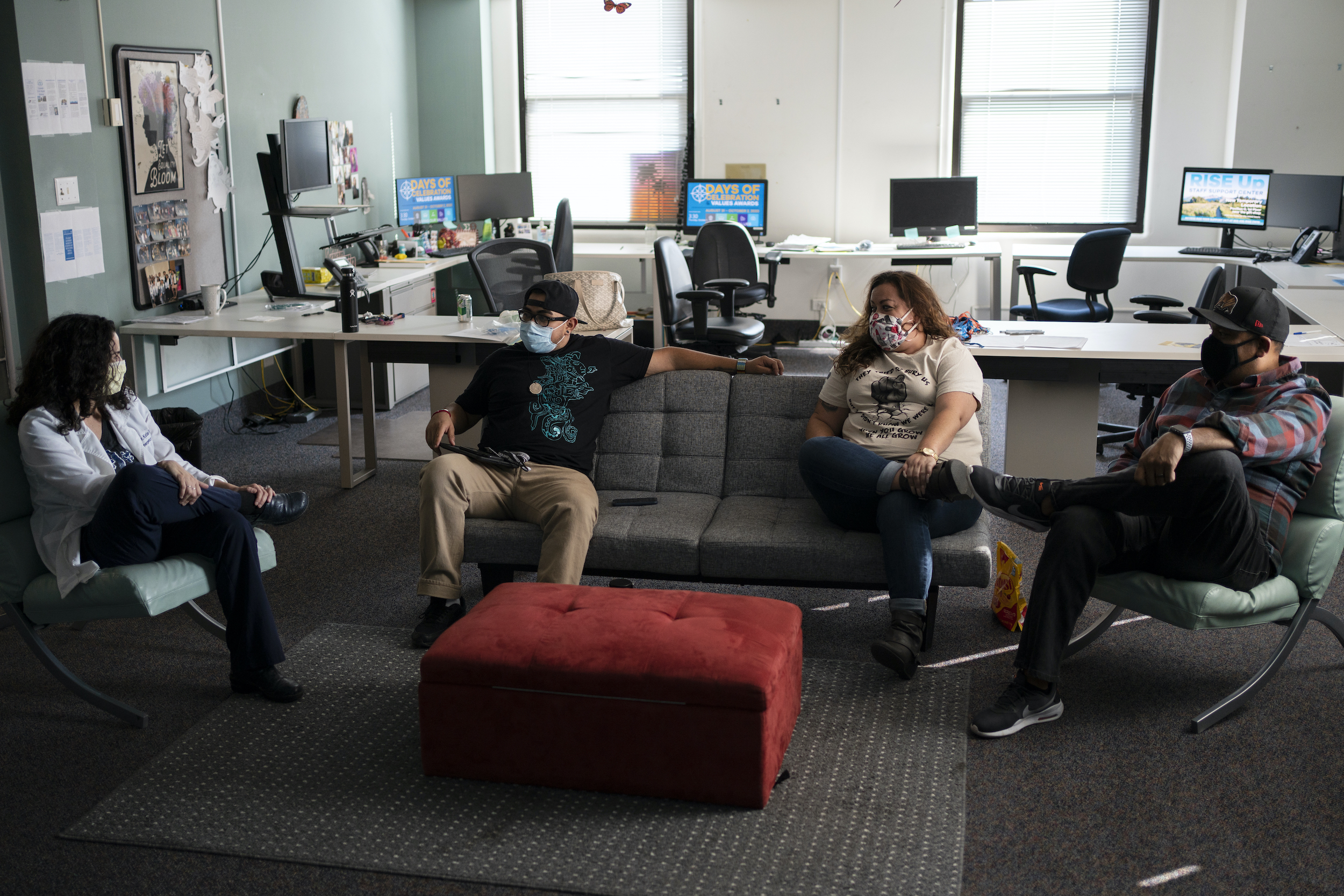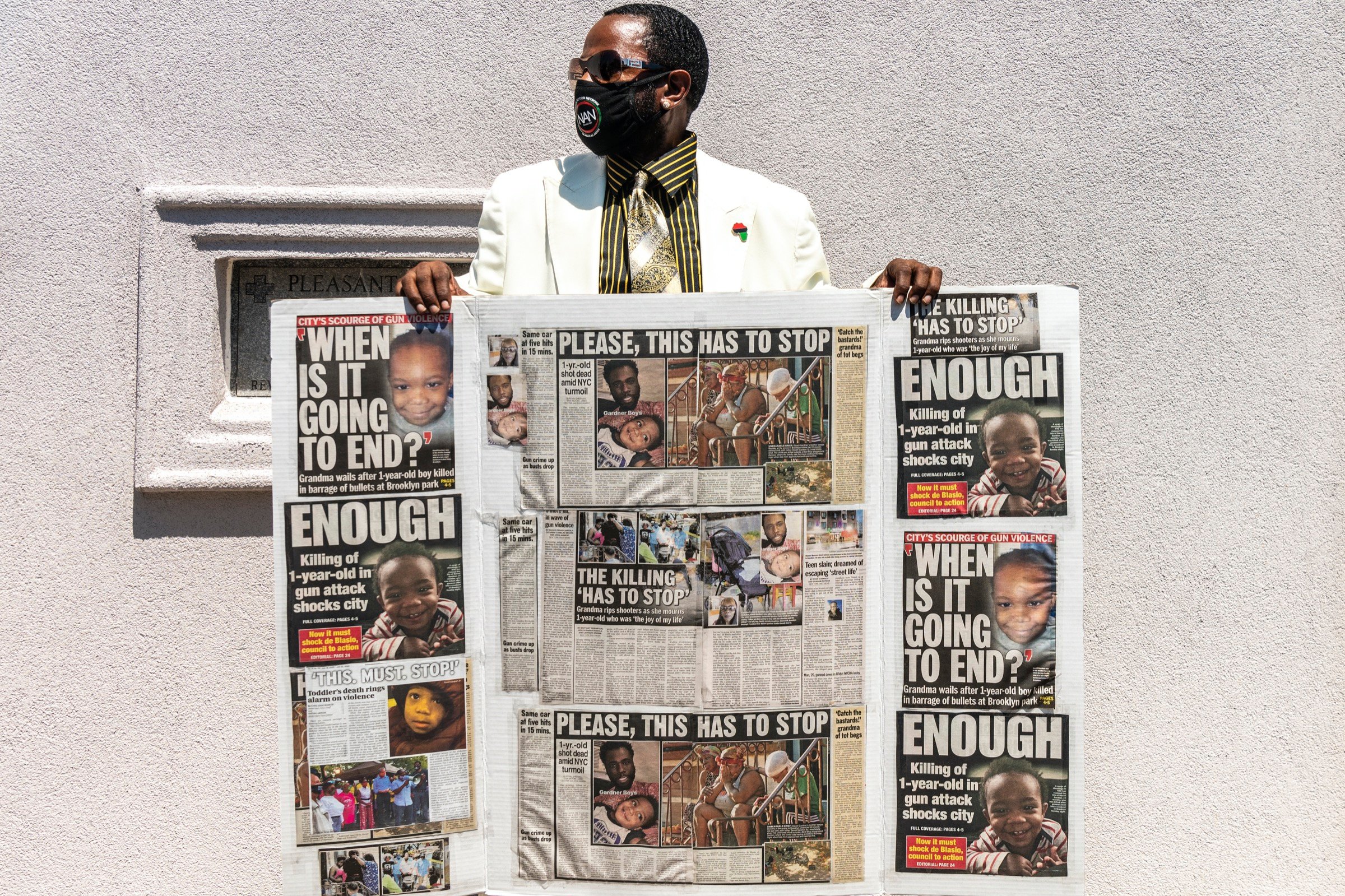At a meeting of law enforcement officials on September 15, Los Angeles Police Chief Michel Moore identified the coronavirus pandemic as the primary factor in the city’s uptick in gun violence. Among COVID-19’s negative impacts, he said, was how it had barred violence prevention workers from visiting the bedsides of gunshot patients, compromising their ability to help interrupt the cycle of retaliatory shootings.
Such counseling, known as hospital-based violence intervention, involves community outreach workers connecting with violent crime victims while they’re still in the hospital and mentoring them for up to a year after those patients are discharged. The concept, first pioneered by a gunshot survivor 30 years ago, hinges on the idea that patients are particularly receptive to guidance following a near-death experience. The goal is to cut down on retaliatory shootings and repeat firearm victimization by offering survivors an opportunity to change the direction of their lives. Several studies have found that people who have been shot have a high risk of being shot again.
This help comes in the form of counseling, assistance in obtaining Internet and phone access, and finding jobs or schooling. Research suggests that hospital-based violence intervention can be an effective way of stopping the cycle of violence, and more jurisdictions are embracing it. Earlier this year, New Jersey established nine programs across the state, and a police reform bill passed by the U.S. House of Representatives following the killing of George Floyd would authorize new grant funding for hospital-based intervention.
But many outreach workers are contractors, rather than hospital employees, and their access to patients has been curtailed by restrictions on visitors implemented in the spring to limit the spread of COVID-19. Without that initial in-person contact, these workers have been forced to adapt.
Outreach workers in Louisville moved their intervention efforts from hospital bedsides to parking lots, where they tried to engage family and friends who congregated outside the hospital. In Rochester, New York, clinicians now refer gunshot patients to a local violence prevention group, instead of arranging an intake interview for them while they’re still in the hospital. In Denver, outreach workers at the region’s only hospital-based intervention program tried to establish rapport with patients over the phone for three months before lockdowns eased.
“It was kind of like a cold call. That was extremely difficult,” said Michelle McDaniel, the program manager of At-Risk Intervention and Mentoring, which works with patients at Denver Health Medical Center in Colorado. “We didn’t have a whole lot of individuals hang up on us, but it was definitely difficult in regards to making follow-up visits.” Participation in weekly “virtual healing circles” dropped off somewhat at first, she said, adding, “Everyone’s a little Zoomed out now.”
But that changed after the nation was roiled by the killing of George Floyd, and the program became even more of a lifeline. “The communities that we work with, they’ve already experienced homelessness,” McDaniel said. “They’ve already experienced unemployment. They’ve already experienced obstacles and barriers in getting education or navigating the justice system. It was just harder for them to deal with it when all this took place.”
Outreach workers in Los Angeles agree that face-to-face contact is the most effective way to reach gunshot patients, and say that social distancing guidelines have undeniably changed their interactions. Arcelia Tavarez is the program manager at SoCal Crossroads, an anti-violence nonprofit that sends outreach workers to Harbor-UCLA Medical Center and St. Francis Medical Center in Los Angeles County. She said the economic strain and social isolation that are byproducts of the pandemic have made patients just as eager for guidance, even if it can only be provided over the phone.
“Pre-Covid, the case manager would receive a patient list every morning and go to the hospital to meet with each of them,” Tavarez told The Trace. Now outreach workers call patients in the emergency room to assess their needs and inform them of the services available to them, including trauma counseling, physical rehabilitation, job training, and education.
Fatimah Loren Dreier, the executive director of the Health Alliance for Violence Intervention, a national network of hospital-based violence intervention programs, is well attuned to the disruptions that the pandemic has wrought. But she told The Trace she was optimistic because in-house providers — like physicians, nurses, social workers, and clergy — have stepped up to fill the gap as gun violence has jumped this year.
“There’s been a surge in people who are coming to the hospital,” she said, and “hospitals are motivated to make sure that there’s not a revolving door.” Thanks to those efforts, victims are still getting outreach services, even if it takes an extra step. “They really work to make sure that patients at bedside know that the program exists,” said Dreier, “and that they will be connected to someone who’s going to support them when they’re discharged.”
Katie Bakes, an emergency physician and director of the At-Risk Intervention and Mentoring program at Denver Health Medical Center, which has resumed in-person visits between outreach workers and patients, said the gunshot patients who come through her emergency room “don’t really ever go away,” because they maintain relationships with the program’s half-dozen outreach workers long after their participation in the program concludes.

“I think the moment matters,” Bakes said. “[It’s] when we’re able to reach them and show that we care and help shepherd them through a traumatic experience.”
Dreier said her group is currently conducting a survey of how the three dozen hospital-based intervention programs in its network have adapted to COVID.
“We are living in unprecedented times,” she said. “It’s been incredibly powerful to see how resourceful our movement is, given the constraints that coronavirus has as placed on these programs.”

